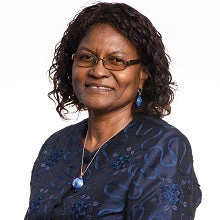 Human capital in Bangladesh
Human capital in Bangladesh
Sumi, a bright 10-year old girl I met in Dacope Upazila, one of the most cyclone-prone areas in Bangladesh, has been on my mind as the impact of the COVID-19 pandemic continues. Sumi wants to be a doctor to help the people of her village. To reach Sumi’s village, we traveled for an hour by speedboat. The cyclone shelter operates as a school and concurrently a haven during natural disasters. As the pandemic threatens to reverse a decade of human capital gains in Bangladesh, will she able to achieve her dreams?
Over the past decade, Bangladesh has improved its human capital. Not only have child and maternal mortality reduced, the rate of stunting for children under 5 dropped from 43 percent in 2007 to 31 percent in 2018. Similarly, the share of households benefiting from social safety net coverage more than doubled from 12 percent in 2005 to 28 percent in 2016.
Bangladesh also achieved gender parity in school enrollment, leading to improvements in health and nutrition outcomes in early years. Studies show that participation in early childhood education is linked to significant improvement in literacy, numeracy, and socio-emotional skills development among children. That is why through the Quality Learning for All Program, the World Bank is supporting preschool-aged children, especially those from poorer families and remote areas, to better prepare them for primary schooling.

Bangladesh also achieved gender parity in school enrollment, leading to improvements in health and nutrition outcomes in early years.
In addition, more girls and women now have access to higher education and health services. Thanks to the School Stipend Program for Girls, female enrollment in secondary schools increased dramatically from 39 percent in 1998 to 67 percent in 2017. Moreover, a decline in fertility rates has led to an increase in female labor force participation.
Since 2009, the foundations for digital learning were laid with the establishment of the Bangladesh Research and Education Network (BdREN), setting up high-performance bandwidth, hotline numbers for students, secure network connectivity at institutions. Consequently, all higher education courses were streamed online during the lockdown. Today, an average of 3,800 classes are held online with more than 220,000 students attending.
But challenges remain. According to the 2020 Human Capital Index (HCI), a child born today in Bangladesh will be 46 percent as productive as she could have been, if she had complete education and full health. A child who starts school at age 4 can expect to complete 10.2 years of schooling by her 18th birthday. This score is lower than the average for the South Asia region and lower-middle-income countries.
Quality of education is a concern with 58 percent of 10-year-olds unable to read and understand a simple text by the end of primary school. Pockets of out-of-school children remain, especially in urban slums, disadvantaged and remote areas. Only a third of adult women participate in the labor market, and less than 6 in 10 youth not currently studying or in training are engaged in productive employment. Graduate unemployment is high due to skill mismatch as the job market demands change.

A child who starts school at age 4 can expect to complete 10.2 years of schooling by her 18th birthday. This score is lower than the average for the South Asia region and lower-middle-income countries.
The pandemic has exacerbated these challenges. The most vulnerable have been affected by income loss while gender-based violence has seen a significant rise during the lockdown. The pandemic has also exposed the digital divide between the haves and the have nots in their ability to access online education . A recent survey shows that only one in five children from poor households is accessing digital learning opportunities during the pandemic.
In such prevailing uncertainties, one cannot but wonder what the future of a girl like Sumi in a rural remote village of Bangladesh would look like. How can we respond to these challenges and build back smarter and better so that systems are fit for purpose and are resilient to future shocks?
There is no gainsaying that more and better investment in people is fundamental. This means more investments in a robust healthcare system, resilient and flexible education, and responsive social protection programs, particularly for the poor. Bangladesh spends only 0.4 percent (2017) of its GDP in public spending on health - lower than the South Asia regional average of 2.0% and lower-middle-income countries' average of 2.8%. More can and should be done.
However, despite threats of the pandemic, the future looks promising as the use of digital technologies to accelerate human capital development is prominently a government priority. Efforts to digitize payment mechanisms mean poor households can receive cash support through secure mobile and other electronic financial services, closer to their homes. Moreover, advances in digital technology can act as transformational triggers, bringing high-quality education, health services, and infrastructure, particularly to rural and poor communities. And, offering a second chance for poor out of school children will lead to unleashing Bangladesh’s human capital potential which is key to economic resilience going forward.


Join the Conversation